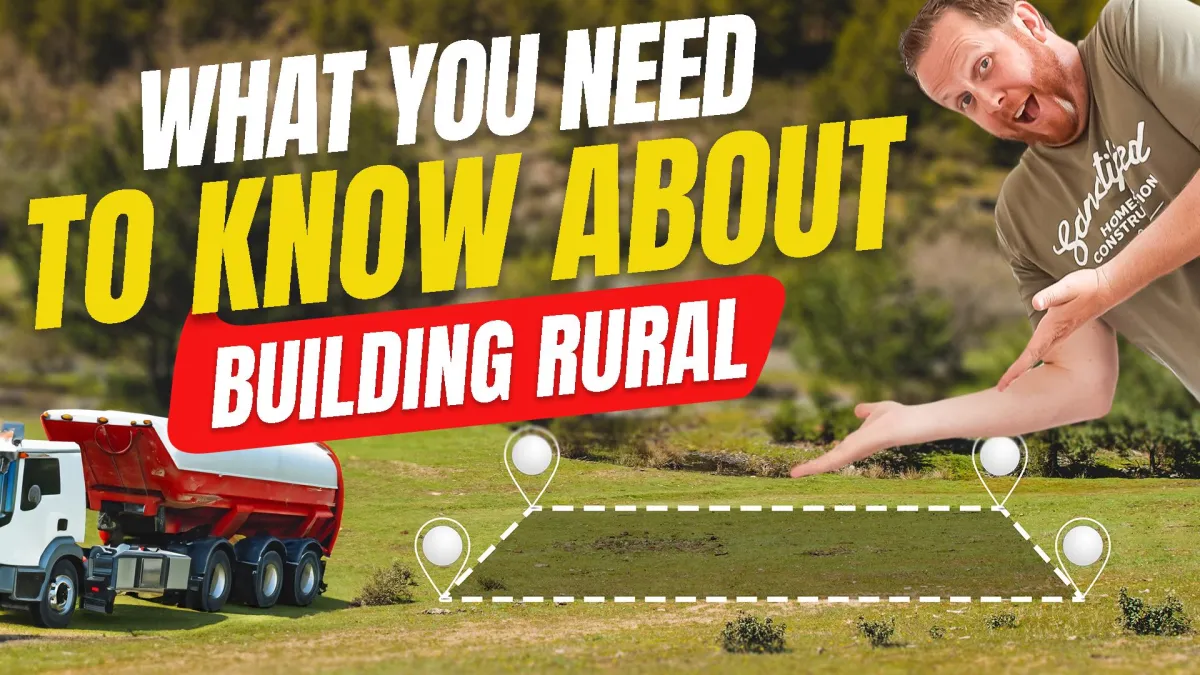Education& Resources helping homeowners and builders make informed choices about Building homes that last
Our ultimate goal is to create a community of builders and homeowners who are dedicated to improving the quality of life in their neighborhoods and communities.
Education& Resources helping homeowners and builders make informed choices about Building homes that last
Our ultimate goal is to create a community of builders and homeowners who are dedicated to improving the quality of life in their neighborhoods and communities.

What You Need To Know About Building Rural
Hello, it's TJ from Sanctified Homes. Today, I want to dive deep into the intricacies of building in rural areas. The allure of the countryside, with its vast open spaces and serene environment, is undeniable. But before you embark on your rural home-building journey, there are essential factors you need to consider. Let's explore them.
The Driveway: Your First Impression
One of the first things you'll need to think about when building in a rural setting is the driveway. It's not just about having a path leading to your home; it's about accessibility, especially during different seasons.
Length and Material: Depending on the property's layout, you might need a short driveway or one that winds deep into the property. This driveway was dug out, layered with breaker rock, and then topped with crushed gravel. The length and type of materials used can significantly impact the cost.
Culverts and Permits: If your driveway requires a culvert, remember to factor in its cost and the necessary permit. For instance, we had to put in a 40ft culvert for a property, which came with its own set of regulations and costs.
Septic Systems: Understanding the Ground
When you're far from city utilities, you'll need to set up your own waste management system. This is where septic systems come into play.
Perk Test: Before deciding on the type of septic system, a perk test is essential. This test determines the soil's suitability for a septic system. Depending on the soil analysis, you might opt for a mount system, gravity-fed system, or other types.
Cost Variations: The cost of installing a septic system can vary. While some systems might cost around $15,000, others, like the mounting system we recently installed, went up to almost $23,000.
Water Source: Drilling a Well
Another crucial aspect of rural building is ensuring a reliable water source. In many rural settings, this means drilling a well.
Depth and Cost: The cost of drilling a well can vary based on how deep you need to go and if there are any obstructions like rock formations. On average, you might spend around $15,000, but this can fluctuate.
Site Preparation: More Than Just Clearing Trees
Choosing the perfect spot on your property for your home requires more than just clearing trees. It's about ensuring the land is suitable for construction.
Grading and Compacting: If your chosen site is on a slope, you might need extensive grading to create a flat surface. Additionally, if you're building on freshly moved soil, compacting is crucial to ensure stability.
Understanding the Slope: A significant slope can pose challenges. Remember, you can't go over a 10% grade slope. This means for every 100 ft, you can't rise more than 10 ft.
Final Remarks
In conclusion, building in the countryside is a dream for many. The tranquility, the connection with nature, and the vast open spaces are incredibly appealing. However, it's essential to be prepared and understand the unique challenges that come with rural construction. With the right knowledge and a bit of preparation, you can make your rural home-building dream a reality.
If you're inspired to embark on your rural home-building journey, don't hesitate to dive deeper into the process with us. Explore the wealth of information we offer at Wisconsin Home Build and get more insights from our Blessed to Build blog. For visual enthusiasts, our Sanctified Homes YouTube channel offers a plethora of videos that can guide you further. We're here to assist you every step of the way, ensuring you make informed decisions for your dream home.

Home Building Checklist
We understand that the process of building comes with a lot of decision-making. So we created the Home Building Checklist to guide your decision-making process, and it's yours for free here!
WHAT WOULD YOU LIKE TO LEARN?
How can we help?







Why You Will Love Working With Us


Transparency
Honesty is always the best policy, and this is the policy we swear by. We aim to be as transparent as possible with our clients when building their homes.
- We have no hidden fees or surprises.
- We disclose every invoice and bid because we have nothing to hide.
- We are upfront about all costs, including the price or materials and labor costs, so you can trust every dollar of the process.

Experience
Our team has over 25 years of experience in construction and design, so we know how to make your dream home a reality.
- Over 200 homes build with our combined expertise!
- 25 years experience in
Parade of Homes - Builder Of the Year with Madison Area Builders Association
Ultimately, we believe in raising standards
We believe that by helping to create a community of builders and homeowners who are dedicated to improving the quality of life in their neighborhoods and communities, we can help to create a more equitable and inclusive society.
We want to empower homeowners to become involved in the process of creating their own safe and beautiful living environments.
We also want to give builders the opportunity to make a lasting and positive impact on the community by providing quality homes and neighborhoods. By working together, we can help create a better future for everyone involved.

The Blessed to Build Foundation is a 501(c)3 Non Profit providing education & resources to help homeowners and home builders make informed choices about building homes that last.
Dane County, Wisconsin
Hire a Builder
If you are looking to build a new home in the following cities, connect with Sanctified Homes & Construction to start the conversation.
Copyright Blessed to Build Foundation, Inc. 501(c)3

